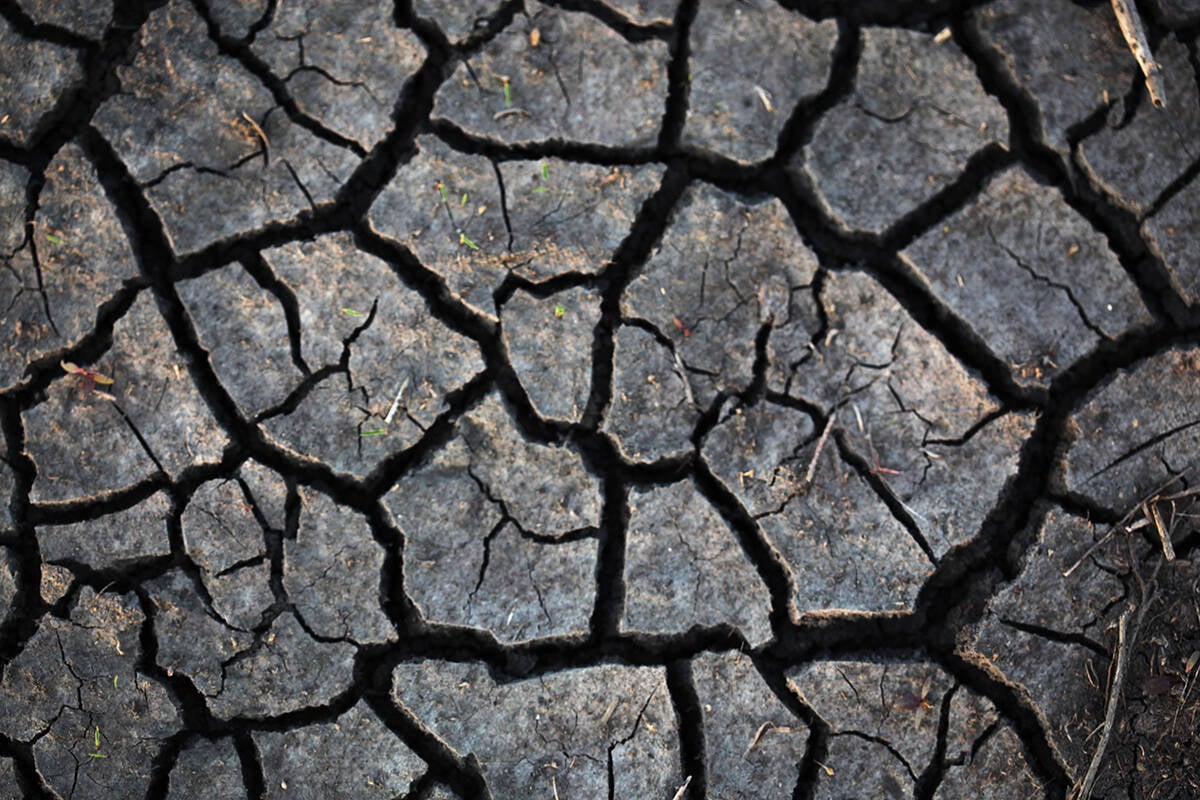Global palm oil production might not rise this year, breaking a 17-year trend of higher production.
Palm production is stressed by dry weather caused by the El Nino and smoke haze coming from massive forest fires in Indonesia.
The last time palm production failed to increase was in 1997-98 when a severe and extended El Nino created drought.
The problems in palm oil production are one of the few factors supporting oilseed prices these days as the U.S. harvested a record soybean crop and South Americans seed what is expected to be a record crop there.
Read Also

Prairies have variable soil moisture conditions
The dry weather in the west was welcome for preserving grain quality and advancing harvest, but it has resulted in very dry soil moisture conditions.
Palm oil is the most produced vegetable oil in the world, with an expected 65 million tonnes this year, compared to 51 million tonnes of soybean oil, 26.3 million tonnes of canola-rapeseed oil and 15.1 million tonnes of sunflower oil.
Palm oil comes from trees and production goes on all year.
The palm industry held a major meeting in Bali, Indonesia last week where analysts gave their forecasts for the coming year.
Prices fell sharply this summer to a six-year low on rising stocks of the oil but they have been recovering this fall.
Prices in 2016 depend on how much production falls, the success of a biofuel program in Indonesia and the further drawdown of stocks.
Analysts gave price forecasts that ranged from almost no increase over current levels to a price rise of 20 percent or more.
Thomas Mielke, editor of Oil World, a prominent publication on oilseed markets, said he expects production in Malaysia, the world’s No. 2 producer will slip by 100,000 to 200,000 tonnes in 2016 and top producer Indonesia’s production will be steady, Reuters reported.
That is quite a change given that global production has been rising by about three million tonnes a year since 2010. Rising demand, mostly from Asia countries, usually gobbles up most of the annual production increase.
Mielke sees palm oil prices at port in Germany in 2016 rising by about 25 percent from the level in October.
Another leading palm analyst James Fry of LMC International thought production could fall even more in 2016, forecasting a drop of nine percent in Indonesia and a 4.5 percent drop in Malaysia.
If the El Nino carries on, disrupting the region’s monsoon, production could be further stressed and prices could climb. Also, buyers might start consuming more soy oil, nibbling away at the large supplies of that product and helping to support canola prices.
Ranver Chauhan of Olam International sees palm oil production globally dropping by one million tonnes.
Several of the analysts also noted that Indonesia intends to increase the amount of palm oil that is blended to make biodiesel to 20 percent from the current 15 percent, further trimming large stocks of palm oil in the country.
The subsidies that make the biofuel program work come from export taxes on palm oil.
Analyst Dorab Mistry was perhaps the least bullish analyst. He expects global palm oil production to rise by one million tonnes in 2016, but that is down from his forecast earlier this year of a 2.5 million tonne increase.
The El Nino is a strong one, but it might be relatively short lived. Mistry thinks the El Nino will not linger into 2016 and so there will not be a repeat of the 1997-98 catastrophe, which was still going strong in January and February.
He thinks prices in the first half of 2016 will be only slightly stronger than they are now.
Another important development in the industry last week was the creation of the Council of Palm Oil Producer Countries, which would be a little bit like the Organization of Petroleum Exporting Countries.
Through it, Indonesia and Malaysia hope to control the global palm oil supply, stabilize prices, promote sustainable production practices and improve the welfare of small palm farmers.














